Methylene blue linked to serious CNS reactions
FDA has received reports of serious central nervous system reactions when methylene blue is given to patients taking serotonergic psychiatric medications.
FDA has received reports of serious central nervous system (CNS) reactions when methylene blue is given to patients taking serotonergic psychiatric medications.
Commonly used in diagnostic procedures, methylene blue is also used to treat certain medication conditions, including methemoglobinemia, vasoplegic syndrome, ifosfamide-induced encephalopathy, and cyanide poisoning. Methylene blue is a potent, reversible monoamine oxidase inhibitor (MAOI). Although the exact mechanism of this drug interaction is unknown, methylene blue inhibits the action of monoamine oxidase A - an enzyme responsible for breaking down serotonin in the brain.
It is believed that when methylene blue is given to patients taking serotonergic psychiatric medications, high levels of serotonin can build up in the brain, causing toxicity. This is referred to as serotonin syndrome. Signs and symptoms include mental changes (confusion, hyperactivity, memory problems); muscle twitching; excessive sweating, shivering, or shaking; diarrhea; trouble with coordination; and/or fever.
Methylene blue generally should not be given to patients taking serotonergic drugs. However, some conditions may be life-threatening or require urgent use of methylene blue, such as emergency treatment of methemoglobinemia, ifosfamide-induced encephalopathy, or cyanide poisoning.
“There are other drug-drug interactions with certain psychiatric medications, especially concerning MAOIs, for which it is thought the type of interaction that occurs with methylene blue; and most healthcare professionals do inquire about a person's medication history,” said Bill Mader, RPh, lead consultant at Pharmacy Outcomes Specialists, in Lake Zurich, Ill. “The hard part is that it is usually an emergency situation that calls for the use of methylene blue, so a person may not even be conscious or in any condition to give a medication history,” Mader said.
“If methylene blue must be administered to a patient receiving a serotonergic drug, the serotonergic drug must be immediately stopped, and the patient should be closely monitored for emergent symptoms of CNS toxicity for 2 weeks to 5 weeks if fluoxetine [Prozac] was taken, or until 24 hours after the last dose of methylene blue, whichever comes first,” he added.
A list of the serotonergic psychiatric medications that can interact with methylene blue can be found in the FDA Drug Safety Communication (DSC). Safety information about this potential drug interaction and important drug usage recommendations for emergency and non-emergency situations are being added to the drug labels for serotonergic psychiatric medications.
Patients should not stop taking their serotonergic psychiatric medications without first talking to a healthcare professional.
A separate DSC also has been released for Zyvox (linezolid) because of similar potential drug interactions with serotonergic psychiatric medications; that communication includes drug usage recommendations.
Linezolid is used to treat infections, including pneumonia, infections of the skin, and infections caused by a resistant bacterium (Enterococcus faecium). It is a reversible MAOI.
Linezolid generally should not be given to patients taking serotonergic drugs. However, there are some conditions that may be life-threatening or require urgent treatment with linezolid, such as when:
- Linezolid is used to treat vancomycin-resistant Enterococcus faecium infections
- Linezolid is used to treat infections such as nosocomial pneumonia and complicated skin and skin structure infections, including cases caused by methicillin-resistant Staphylococcus aureus
Healthcare professionals and patients are encouraged to report adverse events or side effects related to the use of these products to FDA's MedWatch Safety Information and Adverse Event Reporting Program.













